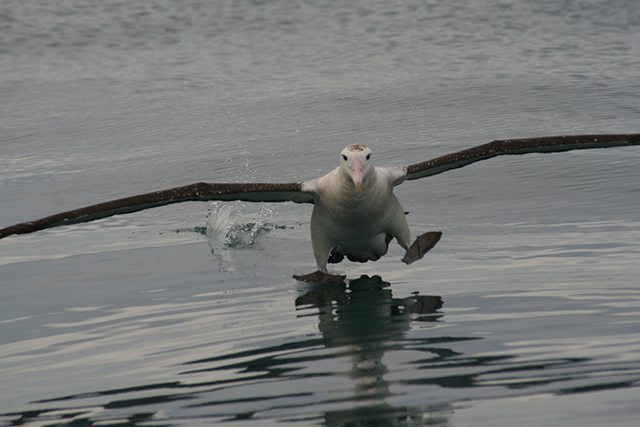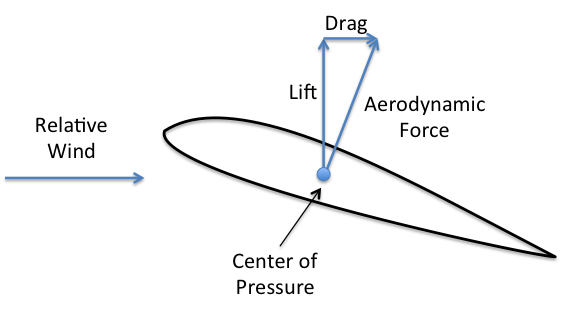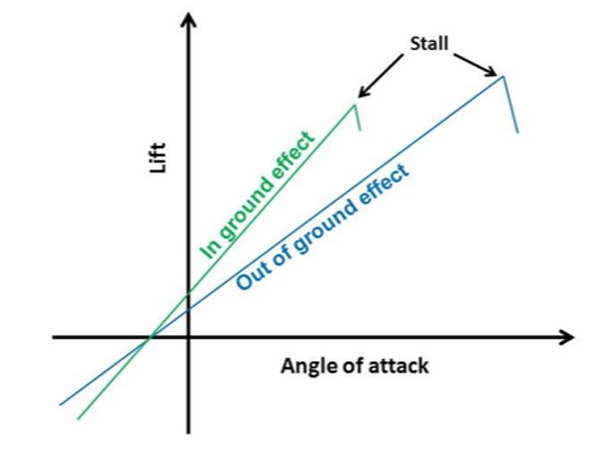Ground effect has a significant effect on how your airplane takes off and lands, but depending on the airplane you might not ever notice. Aircraft with wide wingspans are obviously impacted. Aircraft engine idle characteristics can mask landing ground effect impacts. The key is you have to think about it and deal with the idiosyncrasies of the airplane you are flying.
— James Albright

Updated:
2021-08-24
Most of us identify ground effect as causing any tendency to float during a landing. The solution, of course, is to fly the airplane onto the runway or go around. But a more critical problem happens during takeoff. Many modern aircraft are powerful enough to muscle their way through the increased induced drag that occurs when leaving ground effect. But at heavy weights on a hot day with an engine failed, that may not be so easy. After an engine failure during takeoff achieving V2 takeoff safety speed becomes critical. Flying slower can be fatal. More about this: Case Study: Gulfstream G650 N652GD.
2 — More lift in ground effect

1
The classic explanation
When an airplane in flight nears the ground (or water) surface, a change occurs in the three dimensional flow pattern because the local airflow cannot have a vertical component at the ground plane. Thus the ground plane will furnish a restriction to the flow and alter the wing up wash, down wash, and tip vortices. These general effects due to the presence of the ground plane are referred to as "ground effect."
Source: Hurt, pg. 379
2
More lift in ground effect
- Wing tip vortices are formed when higher pressure air below a wing flows around the wing tips into the lower pressure region on top of a wing that is developing lift. The vortices are strongest at the tips and become weaker progressing toward the centerline of the aircraft, as shown in [the figure].
- Consider an aircraft with an infinitely long wing. This (infinite) wing has no wing tips and, consequently, no wing tip vortices. The absence of wing tip vortices on the infinite wing means that the up wash, in front of the wing, and the down wash, behind the wing, cancel each other out, and there is no net down wash behind the wing.
- The relative wind (RW) ahead of this wing is horizontal, and the RW behind the wing is also horizontal. The RW at the aerodynamic center (AC) is the average of these two and must be horizontal. Lift is 90° to the RW, so it acts vertically.
Source: Dole, pg. 50
You have more pressure under the wing than over it, so the pressure below wants to wrap around to the top. Of course the wing is moving forward so this movement from bottom to top tends to trail aft.
- The most noticeable effect is caused by a reduction of the up wash ahead of the wing and the reduction of the down wash behind the wing. as we learned in basic aerodynamics, the down wash is caused mainly by the wing tip vortices. These, as well as the down wash, are greatly reduced by the proximity of the ground.
- Without so much down wash, the local relative wind at the aerodynamic center is more nearly horizontal. The lift vector is more nearly vertical, and the induced drag is greatly reduced.
Source: Dole, pg. 131
Since less of the aerodynamic force is pointed aft, you have less induced drag and more lift. To the pilot, the wing appears to have become more efficient because, really, it has!
3
Lower stall angle of attack in ground effect
While the aerodynamic characteristics of the tail and fuselage are altered by ground effects, the principal effects due to proximity of the ground plane are the changes in the aerodynamic characteristics of the wing. As the wing encounters ground effect and is maintained at a constant lift coefficient, there is a reduction in the up wash, down wash, and the tip vortices. These effects are illustrated by the sketches of [the figure]. As a result of the reduced tip vortices, the wing in the presence of ground effect will behave as if it were of a greater aspect ratio. In other words, the induced velocities due to the tip (or trailing) vortices will be reduced and the wing will incur smaller values of induced drag coefficient, CDi, and induced angle of attack, αi, for any specific lift coefficient, CL.
Source: Hurt, pg. 379
αstall — stall angle of attack
αstall,IGE — αstall in-ground-effect
αstall,OGE — stall out-of-ground-effect
The physical basis and qualitative effects of ground-effect on an airplane’s aerodynamics are well understood. The airflow around the airplane cannot have a vertical component at the ground plane (i.e., air cannot flow into or out of the ground), and so the streamlines around the airplane are altered from what they would be in free air. Specifically, the downwash produced by the wing trailing vortices is reduced by the proximity of the ground plane, which in turn reduces the induced angle of attack and induced drag, and increases the lift coefficient (CL) at a given α. These effects are sketched in [the figure]. The sketch illustrates that αstall,IGE is lower than αstall,OGE, and the sketch also suggests that the maximum CL achievable (CLMAX) in- and out- of ground-effect are the same. [ . . . ] However, other researchers have documented that CLMAX can decrease in ground-effect. [ . . . ] Given this disparity of evidence, the quantitative effects of ground-effect are likely unique to every airplane configuration, and must be evaluated either by test or analysis for each configuration.
O'Callaghan, §VII]
The study looked at CLMAX for an accident in a Gulfstream G650 and concluded:
CLMAX in-ground-effect is reduced compared to CLMAX out-of-ground-effect.
For more about this accident: Case Study: Gulfstream G650 N652GD.
Ground effect lowers induced drag and that in turn increases the lift coefficient for a given angle of attack. For some airplanes this also reduces the maximum coefficient of lift (CLMAX). The aircraft will stall at a lower angle of attack in ground effect:
4
Influences
- During the takeoff phase of flight ground effect produces some important relationships. Of course, the airplane leaving ground effect encounters just the reverse of the airplane entering ground effect, i.e., the airplane leaving ground effect will (1) require and increase in angle of attack to maintain the same lift coefficient, (2) experience an increase in induced drag and thrust required, (3) experience a decrease in stability and a nose-up change in moment, and (4) usually a reduction in static source pressure and increase in indicated airspeed.
- These general effects should point out the possible danger in attempting takeoff prior to achieving the recommended takeoff speed. Due to the reduced drag in ground effect the airplane may seem capable of takeoff below the recommended speed. However, as the airplane rises out of ground effect with a deficiency of speed, the greater induced drag may produce marginal initial climb performance.
- In extreme conditions such as high gross weight, high density altitude, and high temperature, a deficiency of airspeed at takeoff may permit the airplane to become airborne but be incapable of flying out of ground effect.
Hurt, pg. 382
This is what happened to Gulfstream G650 N652GD. The test crew was attempting to achieve unreasonably low V2 speeds based on a normal lift curve. But while in ground effect, the lift curve is shifted to the left and the aircraft stalls at a lower AOA and higher airspeed.
More about this: Gulfstream G650 N652GD.
For much more detail on "Ground Effect Stall," see the discussion here: Balked Landing.
References
(Source material)
Creative Commons, Antipodenan albatross landing, Duncan, 1 June 2008
Dole, Charles E., Flight Theory and Aerodynamics, 1981, John Wiley & Sons, Inc, New York, NY, 1981.
Hurt, H. H., Jr., Aerodynamics for Naval Aviators, Skyhorse Publishing, Inc., New York NY, 2012.
NTSB Aircraft Accident Report, AAR-12/03, Crash During Experimental Test Flight, Gulfstream Aerospace Corporation GVI (G650), N652GD, Roswell, New Mexico, April 2, 2011
O'Callaghan, John J., The Gulfstream G650 Flight Test Accident: Lessons Learned, National Transportation Safety Board, August 19-22, 2013


